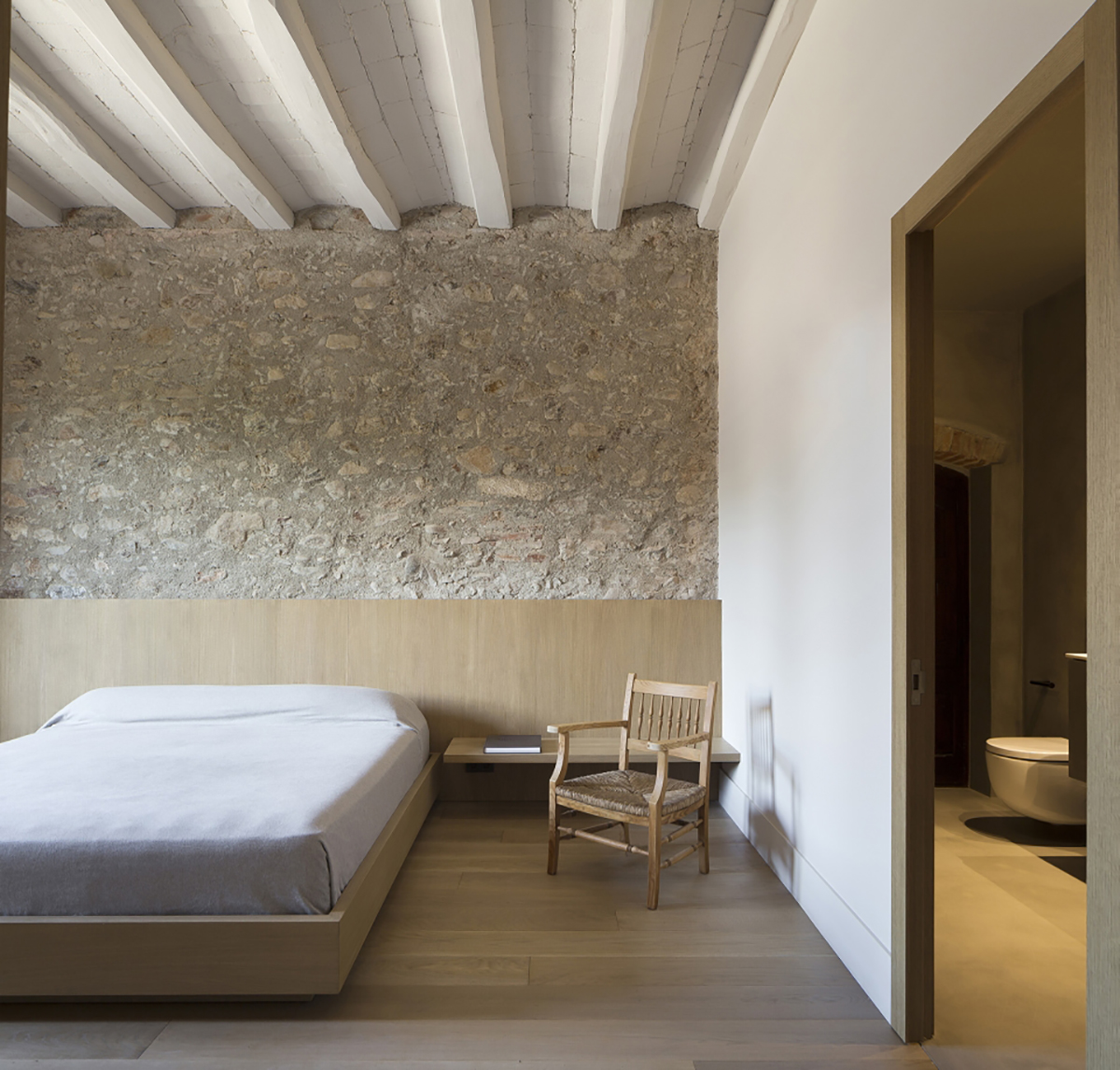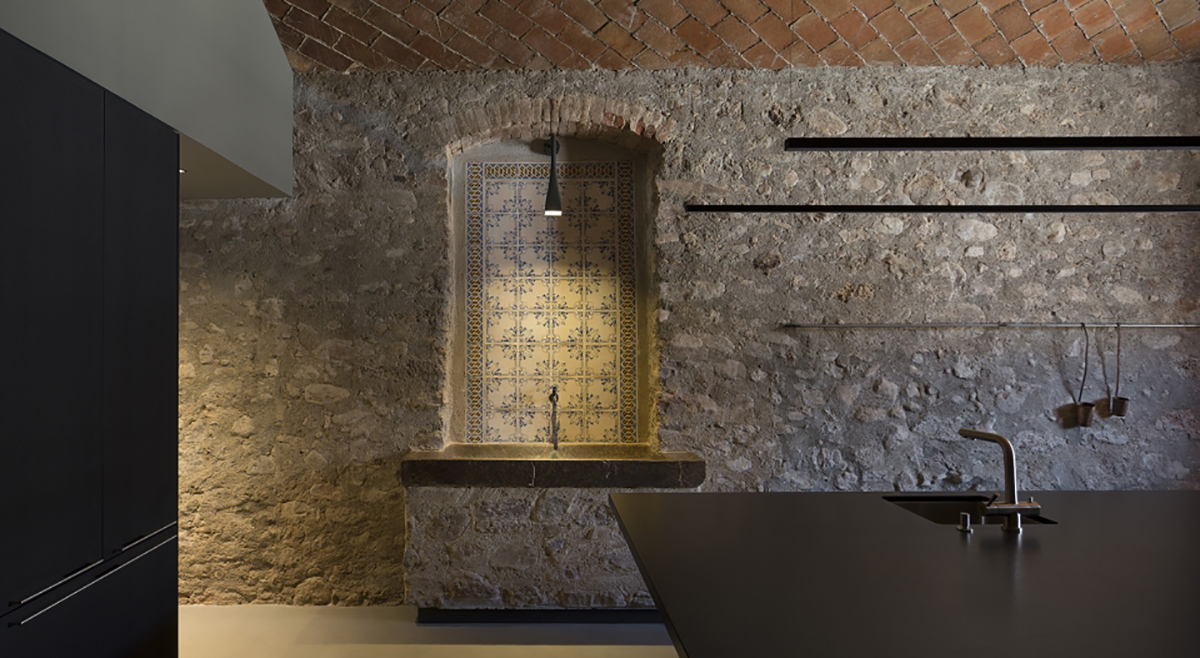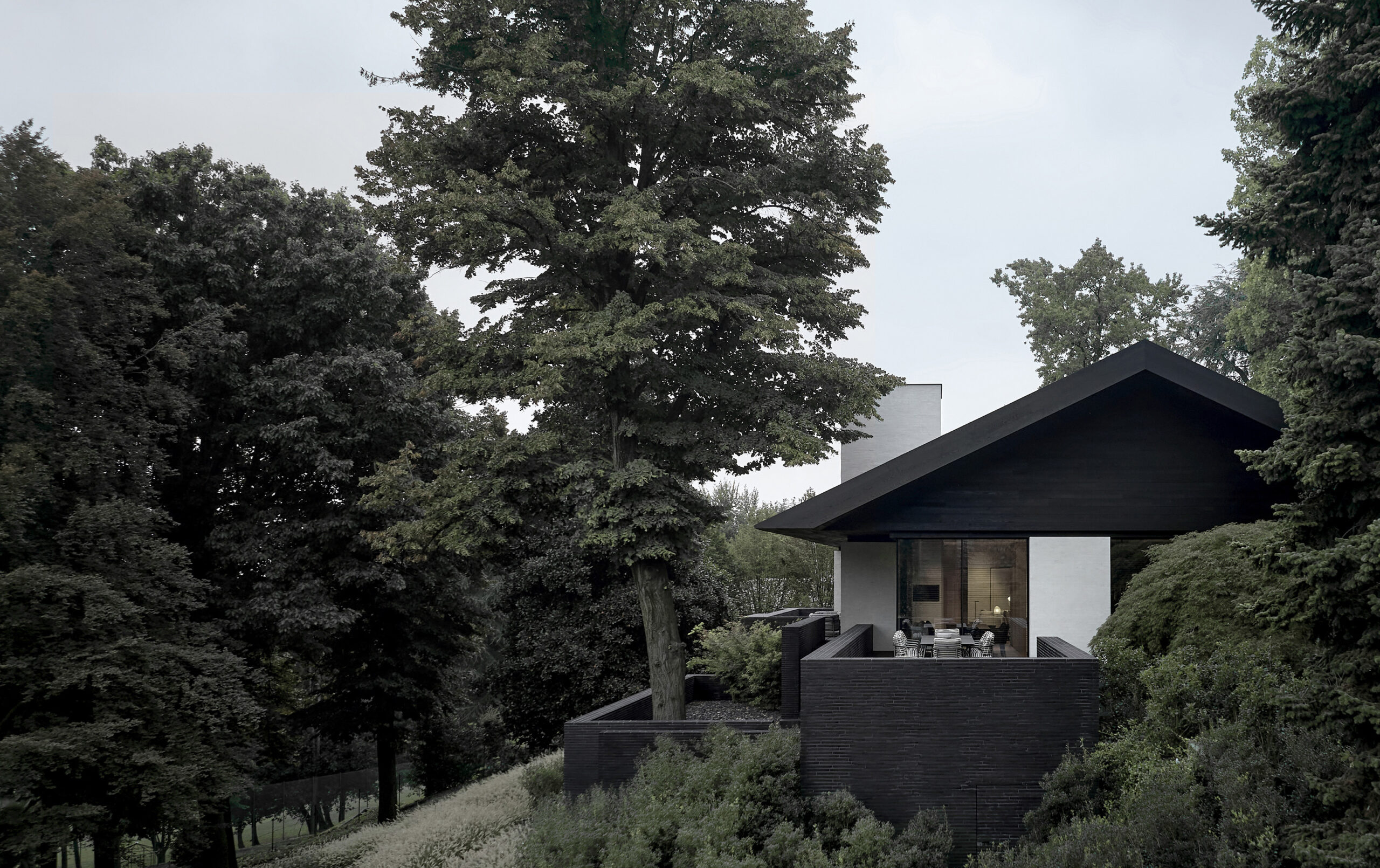
The Sant Martí house may have started its life a long time ago as a fairly ordinary, sturdy three-story farmhouse built of local stone and situated in a small valley in Vallès Occidental, a comarca (county) in Catalonia, Spain.
But, Barcelona, Spain-based Francesc Rifé Studio has transformed it into an exquisite example of balanced beauty.

Over time, the original farmhouse had changed internally and externally many times, gained several lower structures around it, and now also has stables for horses.

To make this all function as a coherent whole and to preserve the integrity of the original building and its materials, the designers took a respectful, minimalist approach.

Rather than forcing or pushing any one material, shape or hue too far, they took a few key elements and let those do the work of creating coherence.

Preserving the old was a strong desire, so much of the surface texture, brick and stonework, and vaults have been left with minimal treatment.

Inside, the unifying feature is a white coating applied to walls and ceilings. It covers the many uneven areas yet leaves the history visible.

Oak wood, adobe ceramics, bricks and stonework add even more texture and earthy tones.

Much of the interior space is divided into areas by sliding or folding doors allowing natural light to travel through and creating openness and visual fluidity.

Arches and vaults appear in both the new and old wall segments; wood latticework both connects and separates while light-coloured oak wood is used for internal walls, cabinetry and some counters.
A separate building is used for hosting family gatherings and events with an open floor plan, modular wood counters and cabinetry and long tables.

But the visually most dramatic new feature are the angular-profiled canopy or pergola structures that connect the house and its annexes, and the house and the garden
The anthracite gray finish gives the pergolas a strong, modern, minimalist presence and makes a decisive statement that says that the old and the new are now equally important.

The farmhouse itself is 575 square metres (6189 sq.ft) in size, the annex buildings are 510 square metres (5489 sq.ft), the courtyard 440 square metres (4736 sq.ft), and the terrace, barbecue, swimming pool and change area take up 680 square metres (7319 sq.ft).

This project combines so many of the features we love and respect: The preservation of the old and its elegant integration with the new; the skillful use of minimalist principles within a complicated set of structures, materials and client needs; and finally, the stunningly sophisticated balance of materials, colors and textures.

All of this creates a sense of timeless grace that is not easy to achieve. Tuija Seipell. (Photos: David Zarzoso)














